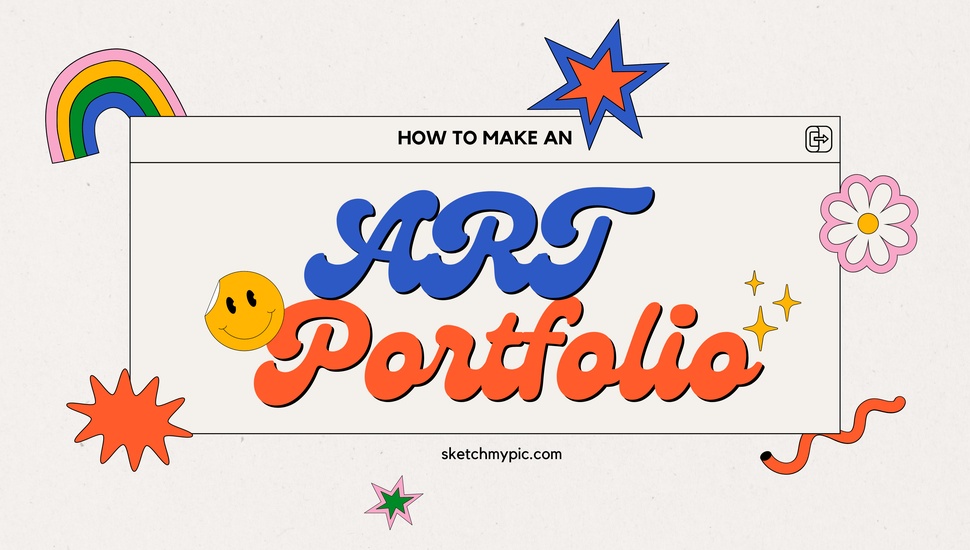
By Jinee
How To'sHow to Make an Art Portfolio
Building an art portfolio is crucial for any aspiring artist, whether applying to art school, seeking gallery representation, or showcasing your work for potential clients. Your art portfolio serves as a visual representation of your artistic abilities, creativity, and unique style. This artsy blog will provide a comprehensive guide to creating an impressive art portfolio that effectively showcases your talent and captures viewers' attention.
An art portfolio is a curated collection of an artist's best and most representative work. It serves as a visual showcase of an artist's skills, creativity, and artistic style. Art portfolios are typically used by artists to present their work to potential clients, galleries, art schools, or other professional opportunities.
Art portfolios can take different forms, depending on the artist's preference and the purpose of the portfolio. They can be physical, consisting of physical artwork presented in a portfolio case or binder, or they can be digital, displayed on a website or online platform specifically designed for art portfolios.
The content of an art portfolio can vary depending on the artist's specialization, medium, and intended audience. It typically includes a selection of artwork that demonstrates the artist's technical abilities, artistic range, and conceptual thinking. The artworks chosen for the portfolio should be of high quality, representative of the artist's style, and cohesive in theme or concept.
Art portfolios may also include additional information to provide context and insights into the artist's work. This can include artist statements, descriptions or captions for each artwork, explanations of the artistic process, or any relevant background information that enhances the viewer's understanding and appreciation of the artwork.
The purpose of an art portfolio is to showcase an artist's skills, artistic vision, and potential to prospective clients, galleries, or art institutions. It serves as a visual representation of the artist's abilities and acts as a tool for self-promotion, professional advancement, or securing opportunities in the art world.
Before diving into creating your art portfolio, it is essential to understand its purpose. An art portfolio is not merely a collection of your artwork; it is a carefully curated selection demonstrating your artistic range, technical skills, conceptual thinking, and personal voice. It should reflect your growth as an artist and convey your unique artistic vision.
Consider the purpose and intended audience of your art portfolio. Are you applying to a specific art school or seeking commercial opportunities? Understanding your unique target audience will help you determine the focus and content of your portfolio. For example, if you are interested in illustration, your portfolio may showcase a variety of illustrative styles. In contrast, a fine art portfolio might emphasize your mastery of different mediums and conceptual depth.
When selecting artwork for your portfolio, aim for a cohesive and balanced collection that showcases your strengths and versatility. Consider including various artwork, such as drawings, paintings, sculptures, digital art, or photography, to demonstrate your range of skills and interests. Review your work body and identify pieces that best represent your artistic style and technical abilities.
When curating your portfolio, be mindful of the following:
1. Quality over quantity:
Including fewer exceptional pieces rather than overwhelming the viewer with mediocre work is better.
2. Consistency:
Choose artworks that demonstrate a consistent theme, style, or concept. This helps create a cohesive narrative throughout your portfolio.
3. Variety and diversity:
Include pieces that showcase your versatility and ability to work with different mediums, subject matters, or artistic approaches. This demonstrates your adaptability and growth as an artist.
4. Chronological order:
Consider arranging your artwork to show your artistic development over time, allowing viewers to see your progress and evolution.
5. Presentation:
Pay attention to the presentation of your artwork. Ensure high-quality photographs or scans, proper framing (if applicable), and clean, professional presentation.
Next, determine the best way to organize and present your art portfolio. Traditional options include physical portfolios and digital portfolios, each with its advantages.
Physical Portfolios:
Digital Portfolios:
Once your art portfolio is complete, it's time to promote it effectively. Share your portfolio with art schools, galleries, potential clients, and online communities. Utilize social media platforms, art forums, and artist networks to increase your visibility and connect with like-minded individuals. Engage in networking opportunities, attend art exhibitions, and seek professional feedback to refine your portfolio further.
Promoting your art portfolio is essential for several compelling reasons. First and foremost, it allows you to gain visibility and exposure for your artwork. By actively promoting your portfolio, you increase the chances of your work being seen by a wider audience, including potential clients, gallery owners, art collectors, and art enthusiasts. It creates opportunities for your talent and creativity to be recognized and appreciated.
Promoting your art portfolio also helps you establish and strengthen your artistic brand. It allows you to showcase your unique artistic style, voice, and perspective. Consistently sharing your work and engaging with your audience helps build recognition and a distinct identity as an artist.
Social media is crucial for every artist’s identity. You might wish to use a funny cartoon avatar to brand yourself as an artist. Click here for a fun cartoon image generator from our website.
Remember that your art portfolio is not a static entity. Your portfolio should evolve as you create new artwork and explore different avenues. Regularly review and update your portfolio, replacing older pieces with new, more substantial work. This process ensures your portfolio remains fresh, relevant, and representative of your artistic abilities.
Crafting an impressive art portfolio requires careful thought, curation, and presentation. By understanding the purpose, selecting your best artwork, organizing it effectively, and promoting it strategically, you can create a compelling portfolio that showcases your artistic talent, creativity, and unique style. Remember to continuously update your portfolio as you grow as an artist, ensuring it reflects your artistic journey and aspirations. Until next time, stay creative!